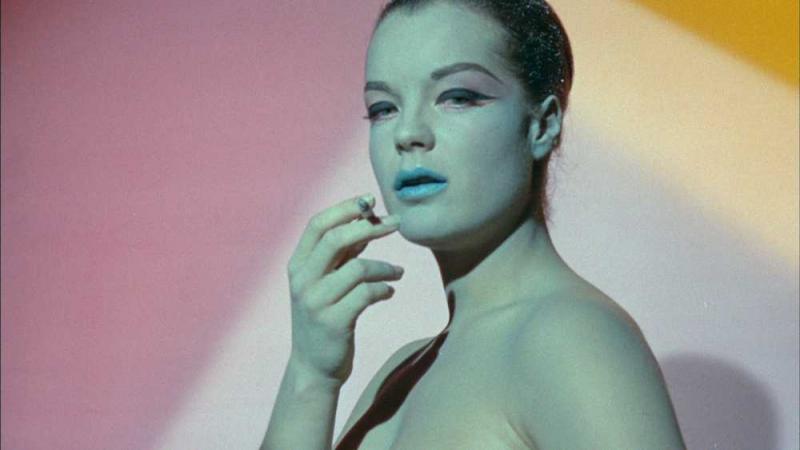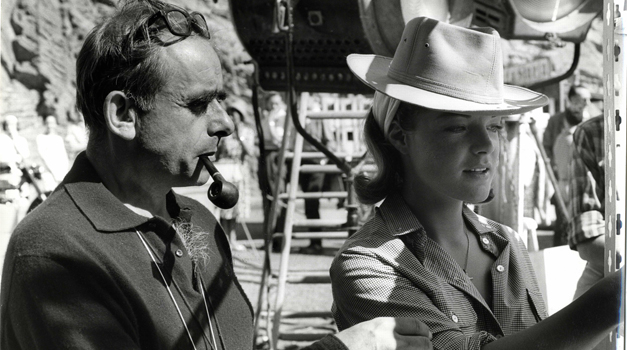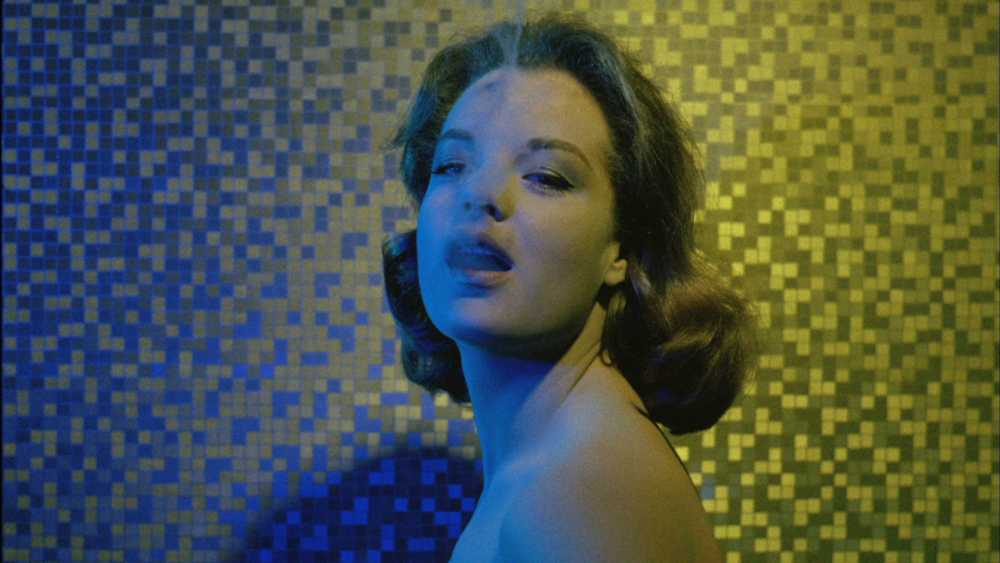Henri-Georges Clouzot's Inferno | reviews, news & interviews
Henri-Georges Clouzot's Inferno
Henri-Georges Clouzot's Inferno
Lost masterpiece or epic folly? After 45 years, the rushes of L'Enfer resurface

When a film shoot is in trouble, with actors dying on set, the heavens opening and other acts of God putting a spanner in the works, it’s usually a gigantic directorial ego which hauls the troubled production over the line. You think of Michael Cimino’s Heaven’s Gate, of Coppola’s Apocalypse Now and above all Herzog's Fitzcarraldo, all films characterised by epic folie de grandeur and flirtation with insanity.
Clouzot is not to be confused with the hapless Inspector of almost the same name. Or at least I don’t think he is. In the Forties and Fifties he was one of France’s leading directors. By the time he came to make L’Enfer, he was in a position to extract from Columbia a limitless budget. He chose to make a film about a man who, domiciled in rural France with his delectable young wife, is unable to quell his irrational jealous rages. Eventually he murders her.
It sounds a modest enough idea for a film. It was shot in and around one lakeside location. And the cast was small, led by Romy Schneider, comely young starlet, as the wife, and Serge Reggiani as her slightly ugly older husband. But Clouzot’s ambition was to create a new cinematic language with which to convey the psychosis of his male character. This involved modernist distortions, weird trippy tricks with mirrors and lenses which must have been great fun to play around with in the lab. In the reels of film stock recently unearthed and forming the core of this documentary, they don’t do a whole lot to convince that Clouzot was onto something.
Maybe he knew it himself. He kept three full-time camera crews on standby at all times, but would leave two of them idle for expensive, morale-sapping swathes of time. The actors became increasingly fractious, though as neither of the leads is any longer around to explain what happened (Schneider was to experience a lonely alcohol-related death aged 43 in 1982), it is left to crew members, including Costa-Gavras, to fill in the blanks. One recalled that, as Clouzot (on set with Schneider, picture right) was an insomniac, he would wake up his colleagues in the small hours to discuss the next day’s shoot. The Nouvelle Vague directors, who espoused the credo that things should happen spontaneously on a film set, may have derided Clouzot as an over-meticulous planner – “I improvise on paper,” he even boasted. But here he didn’t improvise on paper enough. Maybe that’s what hell is in cinema: being stuck on a film which doesn’t know what it’s doing. Scenes were neurotically reshot. Ruggieri was made to spend hours each day running (the husband does a lot of chasing). Eventually he walked. Clouzot carried on regardless until a few days later he had a heart attack when filming a – for 1964 - very daring girl-on-girl kiss between Schneider and a female co-star.
One recalled that, as Clouzot (on set with Schneider, picture right) was an insomniac, he would wake up his colleagues in the small hours to discuss the next day’s shoot. The Nouvelle Vague directors, who espoused the credo that things should happen spontaneously on a film set, may have derided Clouzot as an over-meticulous planner – “I improvise on paper,” he even boasted. But here he didn’t improvise on paper enough. Maybe that’s what hell is in cinema: being stuck on a film which doesn’t know what it’s doing. Scenes were neurotically reshot. Ruggieri was made to spend hours each day running (the husband does a lot of chasing). Eventually he walked. Clouzot carried on regardless until a few days later he had a heart attack when filming a – for 1964 - very daring girl-on-girl kiss between Schneider and a female co-star. The 15 hours of soundless rushes were found in 2005 by Serge Bromberg, a curator of vintage film. Some of it is indeed intriguing. Schneider is always nice to look at in a bikini or less, even when wearing blue lipstick to counterbalance the effects of the colour inversion in the fantasy sequences. In one bit of reversed footage she appears to swallow smoke (picture left). There is one toweringly strong shot in which a steam train bears down on Schneider lying naked on the track. Of the copious illustration of technical wizardry elsewhere in the rushes, you’d have ditched the lot to have the ingenuity of this one explained. The re-acted scenes starring two contemporary actors are also oddly powerful.
The 15 hours of soundless rushes were found in 2005 by Serge Bromberg, a curator of vintage film. Some of it is indeed intriguing. Schneider is always nice to look at in a bikini or less, even when wearing blue lipstick to counterbalance the effects of the colour inversion in the fantasy sequences. In one bit of reversed footage she appears to swallow smoke (picture left). There is one toweringly strong shot in which a steam train bears down on Schneider lying naked on the track. Of the copious illustration of technical wizardry elsewhere in the rushes, you’d have ditched the lot to have the ingenuity of this one explained. The re-acted scenes starring two contemporary actors are also oddly powerful.
The film makes a half-hearted effort to find some sort of consonance between the obsession of the jealous husband and the delusional director. But frustratingly there is no final diagnosis of Clouzot’s affliction. He knew the lake was due to be drained, thus terminating the shoot, but he ploughed obliviously, slowly on. Why? No one’s exactly sure. The film that never was is, generically speaking, a cul-de-sac off a back alley of the cinematic highway. All Terry Gilliam had to show for his version of Don Quixote was Lost in La Mancha, the fly-on-the-wall documentary about how it never got made. But that reveals rather more about its subject than Henri-Georges Clouzot’s Inferno. In effect these are the DVD extras - the deleted scenes, the interviews, the shots of costume fittings. As for the film that should have gone with it, we’re still in the dark.
Henri-Georges Clouzot’s Inferno is on at the ICA until 21 November. Book here.
more Film
 The Book of Clarence review - larky jaunt through biblical epic territory
LaKeith Stanfield is impressively watchable as the Messiah's near-neighbour
The Book of Clarence review - larky jaunt through biblical epic territory
LaKeith Stanfield is impressively watchable as the Messiah's near-neighbour
 Blu-ray/DVD: Priscilla
The disc extras smartly contextualise Sofia Coppola's eighth feature
Blu-ray/DVD: Priscilla
The disc extras smartly contextualise Sofia Coppola's eighth feature
 Back to Black review - rock biopic with a loving but soft touch
Marisa Abela evokes the genius of Amy Winehouse, with a few warts minimised
Back to Black review - rock biopic with a loving but soft touch
Marisa Abela evokes the genius of Amy Winehouse, with a few warts minimised
 Civil War review - God help America
A horrifying State of the Union address from Alex Garland
Civil War review - God help America
A horrifying State of the Union address from Alex Garland
 The Teachers' Lounge - teacher-pupil relationships under the microscope
Thoughtful, painful meditation on status, crime, and power
The Teachers' Lounge - teacher-pupil relationships under the microscope
Thoughtful, painful meditation on status, crime, and power
 Blu-ray: Happy End (Šťastný konec)
Technically brilliant black comedy hasn't aged well
Blu-ray: Happy End (Šťastný konec)
Technically brilliant black comedy hasn't aged well
 Evil Does Not Exist review - Ryusuke Hamaguchi's nuanced follow-up to 'Drive My Car'
A parable about the perils of eco-tourism with a violent twist
Evil Does Not Exist review - Ryusuke Hamaguchi's nuanced follow-up to 'Drive My Car'
A parable about the perils of eco-tourism with a violent twist
 Io Capitano review - gripping odyssey from Senegal to Italy
Matteo Garrone's Oscar-nominated drama of two teenage boys pursuing their dream
Io Capitano review - gripping odyssey from Senegal to Italy
Matteo Garrone's Oscar-nominated drama of two teenage boys pursuing their dream
 The Trouble with Jessica review - the London housing market wreaks havoc on a group of friends
Matt Winn directs a glossy cast in a black comedy that verges on farce
The Trouble with Jessica review - the London housing market wreaks havoc on a group of friends
Matt Winn directs a glossy cast in a black comedy that verges on farce
 Silver Haze review - daughters of Albion dealing with damage
Vicky Knight and Esmé Creed-Miles shine in a drama inspired by Knight's tragic past
Silver Haze review - daughters of Albion dealing with damage
Vicky Knight and Esmé Creed-Miles shine in a drama inspired by Knight's tragic past
 Mothers' Instinct review - 'Mad Women'
Sixties suburban duel veers between daftness and spooky power
Mothers' Instinct review - 'Mad Women'
Sixties suburban duel veers between daftness and spooky power
 Godzilla x Kong: The New Empire review - a bit of a monster let-down
Old foes become new friends amid the usual wreckage
Godzilla x Kong: The New Empire review - a bit of a monster let-down
Old foes become new friends amid the usual wreckage

Add comment